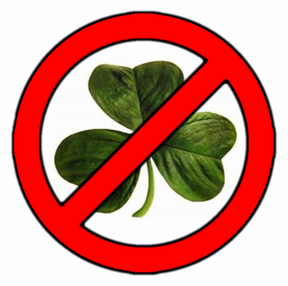 The story began in the summer of 1999. Against a background of racial tension, Boston Housing Association hosted a voluntary meeting promoting diversity in the housing projects.
The story began in the summer of 1999. Against a background of racial tension, Boston Housing Association hosted a voluntary meeting promoting diversity in the housing projects.
The shamrock was mentioned, and it lit a fuse that just keeps on burning.
Boston is proud of its Irish heritage. While it's long been a melting pot of ethnic and cultural backgrounds, the largest proportion of Bostonians claim Irish descent.
20.4% of the population at the last count, which makes it the highest concentration of Irish-Americans in the whole of the USA.
The entire of Boston - and South Boston in particular - is habitually festooned with shamrocks. Not the plant itself, but paintings, murals and iconic prints gracing shutters, windows, doors and the sides of buildings. The mere suggestion that they might not be appropriate to display in a multicultural society incensed Bostonians before the news even escaped the city.
But it all turned out to be a storm in a tea-cup. (If such a phrase is appropriate, given that this IS Boston.)
Traced back to source, it turned out that the original public meeting had taken on the aspect of a debate. Boston Housing Association representative Linda Argo had led a discussion about triggers for tension. Was it permissible to display, say, a Confederate flag or a Nazi swastika on a South Boston window?
While a chorus of 'no, no, no' was instantly forthcoming, she turned the issue on its head. What about a shamrock? After all that only really symbolized the Irish, in a city where nearly 80% of the population were not of Irish descent.
She was getting people to think. She wasn't suggesting for a moment that the ubiquitous shamrock should actually be banned. But that's what it sounded like to some in the audience and the uproar was instant.


 The story began in the summer of 1999. Against a background of racial tension, Boston Housing Association hosted a voluntary meeting promoting diversity in the housing projects.
The story began in the summer of 1999. Against a background of racial tension, Boston Housing Association hosted a voluntary meeting promoting diversity in the housing projects.


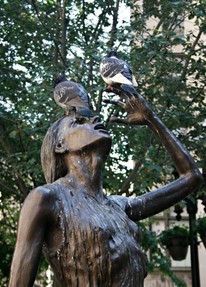 Columnist John Ciccone wasn't at the housing project meeting in South Boston, but he spoke with people who were.
Columnist John Ciccone wasn't at the housing project meeting in South Boston, but he spoke with people who were.















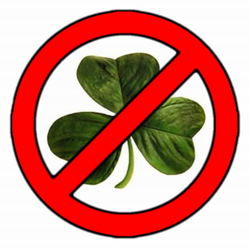

 St Tydecho's Churches in West Waleson 09/03/2014
St Tydecho's Churches in West Waleson 09/03/2014
 Goodies for an Outlander Premiere Partyon 03/06/2015
Goodies for an Outlander Premiere Partyon 03/06/2015
 Holocaust Memorial Day Interview with Rainer Höss, Grandson of Rudolf Architect of Auschwitzon 01/24/2015
Holocaust Memorial Day Interview with Rainer Höss, Grandson of Rudolf Architect of Auschwitzon 01/24/2015
 Romantic Valentine Gifts for an Outlander Fanon 01/16/2015
Romantic Valentine Gifts for an Outlander Fanon 01/16/2015

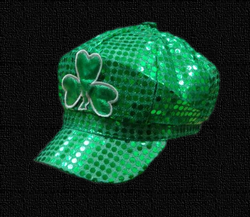
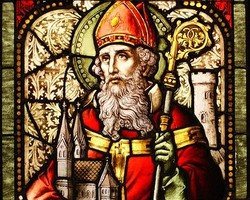
Comments
The Salon article mentioned the bussing kids in for desegregation period.
I love it when you talk about the history that you've lived through! How was that one resolved? It does sound like a messy situation.
Your take on the shamrock in Boston is based on more insight than mine. It could easily have been people worrying about political correctness going mad again.
This is Sheilamarie again. I'm having some problems signing in.
I wouldn't say that there are anti-Irish feelings in Boston today, only that it wasn't that long ago that there were. My eyebrows were raised when you wrote about public housing and the possibility that people considered shamrocks to be racist. It brought me back to my college days when bussing kids in order to desegregate the schools was such a controversy. I worked that summer at a restaurant with a white girl whose mother kept her home instead of letting her be bussed into a predominantly black neighborhood high school and a black guy who was being bussed out of his neighborhood. These two kids had no problem with each other as fellow workers but were smack in the middle of an ugly situation. That experience made me realize how complicated these issues can be. I wonder whether the anti-shamrock message was somehow linked to racism in Boston in general. Was a benign symbol such as a shamrock striking a nerve, resurrecting old wounds? I have no idea, but it makes me sad.
It's really surprised me that there was anti-Irish feeling in Boston. I thought that it was fundamentally an Irish-American city! And the Irish have been there for several generations now. Any idea how prejudice against the Boston Irish came about?
As for the general point - about hard times begetting bigots and bullies - I can certainly see how it comes about. When people feel like they've lost control of their lives, they want to grab some back. Picking on those who are 'other' is a quick-fix way to feel superior. They're not, of course - in fact they just sank even lower - but the point is that they feel so.
Either that or the media sell papers through social scares, and/or a government wants to distract the electorate from political failures by playing the blame game. It's amazing how quickly and thoroughly communities (or whole nations) can be led into hatred, if it's presented as not only normal, but expected of all 'reasonable' people.
Jo, I really must live with a bag over my head because I'm from Boston (Irish, of course!) and was living in Vermont during the time you've written about. Your article is the first I've heard of this so-called ban. I guess I was busy over those few years with a full time job and three teenaged sons. Besides that's the kind of thing I'd probably have laughed off at the time as it seems so ridiculous. But the hurts and the tensions between groups in Boston really are nothing to laugh about. And that "Irish need not apply" mentality was really not all that long ago, even in Boston. My mother was told as much when she was a young woman and I was called some nasty names by people living across the street when I was a child. It takes a longer time to get over such things when you're stuck in the situation of no future, which is how many people living in public housing must feel. What's sad is how people who are hurt can turn on those who are going through some of the same injustices they've just pulled themselves from. People need their symbols of identity, which is not the same as a hate symbol. Still nothing is as simple and clear as it looks from the outside.
The sheer furor it sparked gives testament to how hard people would fight to retain it!
Banning the shamrock seems so random. Even if in some other reality it had actually been banned, I feel it would've only served to empower the symbol. But in general, it is so hard to imagine that actually happening in any sort of recent terms.
Oh! That provides greater insight from someone who knows the area. Thank you very much for this!
So banning the shamrock wasn't quite so out of left field as it might appear to a casual reader.
And yes, I'd love to see you here more regularly too. Lots of discussions to be had. :D
Malcom X called Boston the most racist city in America. Former Mayor and Southie resident Ray Flynn made his political bones by throwing things at buses that held small black children. Today the Mayor of Boston may boycott this year's Southie St. Patrick's Day parade because they ban openly gay people from marching.
Granted all of this might have been caused by the days when there were signs in the windows of Boston that stated, "No Irish Need Apply." The city is a complicated warren of discrimination and tribal feuds. The shamrock is one of the symbols of it.
I forgot to sign in so i'm a gray face. I'll have to start writing here, I can see we could have gobs of fun discussions.
LOL That's the honest answer for sure. :)
Not really sure to be honest. XD you never can tell.